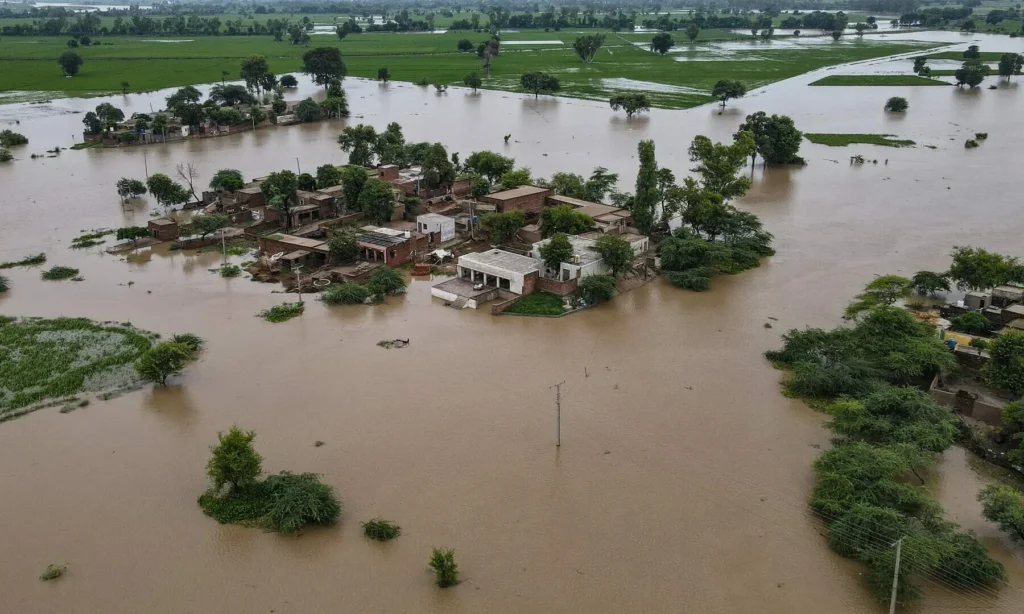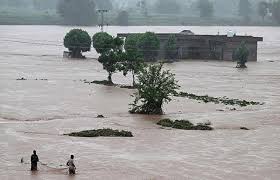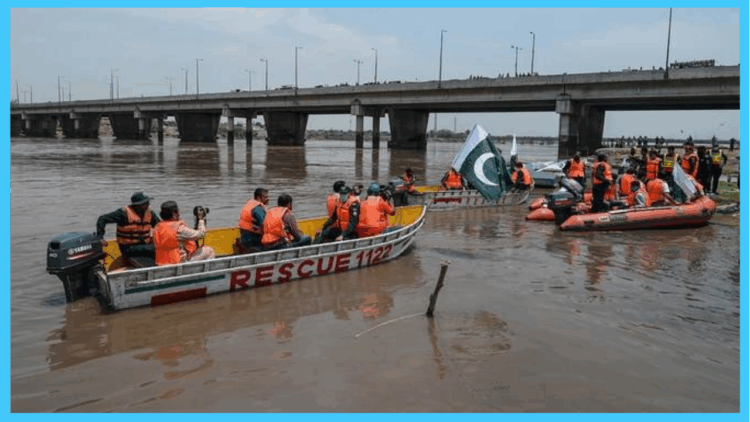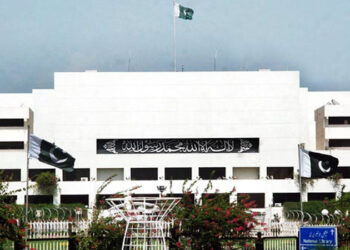Web Desk (Detailed Report); Pakistan’s flood crisis continues to intensify as authorities rush to evacuate tens of thousands of people from vulnerable districts, with water levels rising dangerously across the Sutlej, Ravi and Chenab rivers. According to the National Disaster Management Authority (NDMA), nearly 210,000 people have been safely relocated from flood-hit areas, with no loss of life reported so far

NDMA Chairman Lt Gen Inam Haider Malik told reporters that large-scale rescue operations are underway with support from the Pakistan Army, Rangers, Rescue 1122, Provincial Disaster Management Authorities (PDMAs) and civil administrations. Those evacuated have been shifted to relief camps where they are receiving food, medical treatment and shelter.

The NDMA has also issued an early warning for another spell of heavy rainfall expected between August 29 and September 9, particularly in the northern catchment areas that feed into Punjab’s river system. Malik stressed that local governments, NGOs and emergency services have been placed on high alert to minimise potential losses.
Rising water levels across Punjab rivers
Officials have warned that water flow at Panjnad could surge to between 600,000 and 700,000 cusecs in the coming days. The NDMA said it was closely monitoring pressure points at key barrages, including Kotri and Guddu, while issuing real-time alerts to provincial agencies to ensure timely preparedness.

Along the Sutlej River, evacuation operations are continuing as floodwaters threaten villages and farmland. Army units have been deployed to assist local authorities in moving people to safety, while boats and medical teams remain active at vulnerable points.
Toba Tek Singh, Faisalabad and Jhang brace for impact
In Punjab, district administrations have stepped up preparations. Following directives from Chief Minister Maryam Nawaz Sharif, the Toba Tek Singh administration has been placed on high alert amid fears of flooding in the Ravi. Deputy Commissioner Muhammad Naeem Sandhu, along with police officials, visited riverside villages to monitor evacuation efforts and relief camps. Authorities confirmed that 48 villages in Kamalia and Pir Mahal tehsils are being cleared, while five relief camps and a control room have been set up to continuously monitor water levels.

In Faisalabad, Deputy Commissioner Nadim Nasir confirmed that floodwater from the Balloki Headworks is moving downstream and expected to reach Head Sadhnai within 24 hours. Six relief camps have been established in vulnerable areas, while army support has been requisitioned for emergency response.
Meanwhile, in Jhang district, Rescue 1122 has deployed boats and medical staff at 20 sensitive points. Eighteen flood relief camps have been established, and schools in flood-prone areas have been closed for safety. Commissioner Maryam Khan, accompanied by senior army and police officials, inspected flood defences along the Chenab, ordering around-the-clock monitoring.
Controlled breach at Qadirabad dam
To prevent structural damage to the Chenab’s Qadirabad dam, authorities carried out a controlled explosion of an embankment. Punjab PDMA spokesperson Mazhar Hussain explained that breaching the right marginal embankment was necessary to ease pressure on the dam as water levels climbed.
Federal and provincial response
The federal government has announced strict action against illegal structures along riverbanks. Climate Change Minister Dr Musadik Malik said luxury resorts and unsafe constructions on riverbeds will be demolished, warning that such buildings become deadly projectiles during floods. “No one will be spared, no exceptions,” he said, adding that Prime Minister Shehbaz Sharif has given direct orders for their removal.
The Punjab Home Department has also requested army aviation support to conduct aerial surveys and deliver supplies to stranded populations. Helicopters are expected to join the ongoing relief missions.

Army’s large-scale rescue operations
Inter-Services Public Relations (ISPR) Director General Lt Gen Ahmed Sharif Chaudhry briefed the media on the army’s role in relief efforts. He confirmed that 19 infantry units, seven engineer units and four medical units are deployed in Punjab, KP, Gilgit-Baltistan and Azad Jammu and Kashmir. A total of 29 army medical camps are operational, treating more than 20,000 people.
So far, the army has rescued 28,000 individuals, distributed rations, completed 26 aviation sorties despite poor weather, repaired three major bridges and cleared over 100 roads. In Gujranwala division alone, six infantry units and two engineer units with boats are assisting in evacuations. Around 6,000 people have been relocated from low-lying areas.
In Kasur, army engineers and infantry units have helped evacuate nearly 9,000 people, while relief camps and medical centres have been set up. Similar operations are underway in Narowal, Okara, Sialkot, Faisalabad, Hafizabad and Bahawalpur.
Evacuation figures and district breakdown
According to Rescue 1122, over 210,000 people have been moved to safety across Punjab. District-wise figures include 2,275 evacuees from Kasur, 914 from Okara, 846 from Pakpattan, 785 from Bahawalpur, and smaller numbers from Vehari, Bahawalnagar, Narowal, Hafizabad, Lodhran and Chiniot. Relief camps have been set up in government schools and community centres, where food and clean drinking water are being supplied.
Meteorological warnings and record-breaking rains
The Pakistan Meteorological Department (PMD) has issued fresh alerts, warning of “very high to exceptionally high” flood levels in the Chenab, Ravi and Sutlej. The Flood Forecasting Division has cautioned that the Indus at Guddu and Sukkur barrages will reach “very high” flood levels between September 4 and 5. Trimmu Barrage on the Chenab is expected to reach critical levels by Friday evening.
Heavy rain continues to lash northern Punjab, with Sialkot recording its heaviest rainfall in nearly five decades. In the last 24 hours alone, the city received 363.5 millimetres, surpassing the 339.7mm recorded in 1976.
Prime minister’s directives
Prime Minister Shehbaz Sharif has instructed federal ministers to personally visit flood-affected districts and ensure smooth relief operations. He directed NDMA Chairman Lt Gen Inam Haider Malik to maintain close coordination with the Punjab PDMA and accelerate evacuation and aid delivery. “Relief operations should be further intensified, and people living along river passages must be relocated swiftly,” he said.
Punjab PDMA Director General Irfan Ali Kathia also warned that high floods in Ravi at Jassar are expected to reach Lahore and Shahdara by late tonight, urging residents to remain vigilant.
As Pakistan braces for further rainfall and rising river levels in the coming days, authorities continue to stress precaution, timely evacuations and close coordination between civilian and military agencies to minimise losses.

























